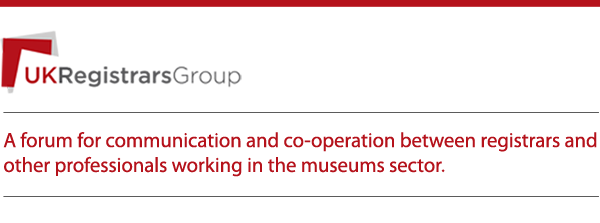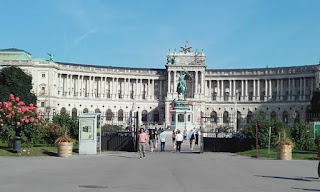Julia Voss – Art
Department Head, Franfurter Allssemeine Zeitung, Germany
On
the second day of the conference I attended the fascinating talk by Julia Voss
asking us to think about what visitors need to know about the world of art,
galleries and museums that might present museum professionals and visitors
alike with moral questions and dilemmas.
Most
visitors to our museums and galleries might assume that each work has been
placed in an exhibition after a long curatorial reasoning. However, as registrars we know that the
location or inclusion of an object in an exhibition may be due to the environment,
lender’s conditions, the size of the work, security arrangements, what it is
made of etc. So even on a very
fundamental level, there are ‘behind the scenes’ elements that the public are
not aware of that might dictate how an exhibition is curated or how objects are
displayed. However, there are also other
less straightforward reasons as to why certain works may be included in an
exhibition.
Julia
also identified two ‘species’ of the art world – the majority of people who
interact and inhabit this world are the public or public minded bodies. Their perception of cultural organisations is
of enlightenment, for education and for the good of everyone. This majority take the front row, as it
were. Then there are the minority of
those who interact with the art world, those who see the works as financial
investments and for their own personal interests. The visitor doesn’t get to know about his
side of art, but should they? Julia
argues that yes, visitors should be made aware of who owns major works of art
and how inclusion of them in an exhibition or event can impact on the financial
value of works.
When
work is displayed with the label ‘Private Collection’ it gives the lender
anonymity and visitors are not aware of any conflicts of interest or added
value that is being given to the art.
Julia cited that in the United States in 2015 private museums received a
letter from the Senate stating that all private museums founded by banks, art
dealers etc. were to provide the government with details of opening hours,
visitor numbers and access to collections.
These letters were prompted by a newspaper article questioning the right
of private museums to receive tax exemptions regarding their role in serving
the public. The question that arises is
that are private collectors using the guise of public welfare to turn their
collections into private wealth? By
displaying your collection in the form of a public gallery are you making it
more financially valuable?
For
the Venice Biennale http://www.labiennale.org/en/art/news/22-11.html major collectors lend
large installations of art. Is this with
the intention of nurturing their value? Using
the art like the stock or assets of a company being nurtured on the
markets? If so should the work be
displayed at art fairs instead of public exhibitions? If the financial markets are determining the
contents of exhibitions, then the visitors should be aware of why they are shown
certain collections and not others. In
some cases, lenders may be lending for tax exemptions or to raise the profile
and therefore to raise the kudos and value of the work.
Julia
argued that the public should know who lends major works of art, so that they
know who owns the work and the potential motives behind the loan so that the
public can make an informed choice about which exhibitions they visit. It would also make sure the lenders were
transparent about their practises and use of art. I wondered if elsewhere in Europe there are Codes
of Ethics for museums and galleries, such as the UK MA’s code http://www.museumsassociation.org/ethics/code-of-ethics and how strictly they
are enforced?
To
give this talk further context I attended the showing of the documentary Beltracchi – The Art of Forgery, http://www.bbc.co.uk/arts/0/32608939
which
explored further the ethical dilemmas that face the world of art, galleries and
museums. The prolific forger Beltracchi
argues why is it wrong for him to make forgeries when everyone benefits – the
art critic and academic have new material to study, the expert and art dealer
make a profitable commission fee, the collector has fantastic art to put on the
wall and the Beltracchi can make a living.
You are almost seduced into his argument before you realise it is
ethically wrong and dishonest.
The
film highlighted the shadier side of the art market and how there are
definitely people involved who do not put the public benefit as the first
priority of their activities. Food for thought for all registrars when
negotiating loan contracts…..
By
Lyn Wall, Registrar, National Museums Scotland



No comments:
Post a Comment